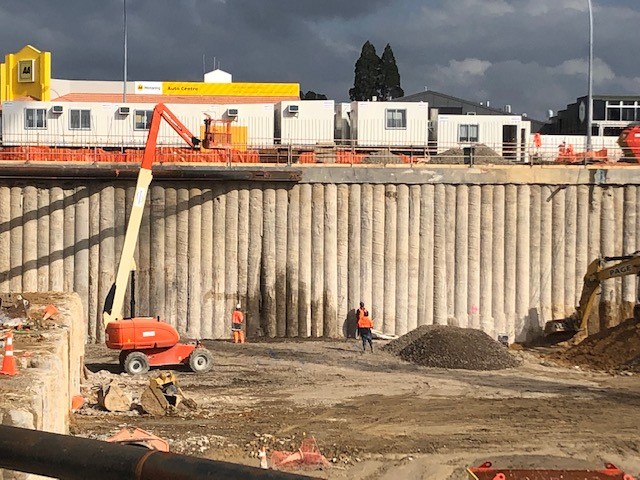Secant Walls
CLL have been constructing secant walls for 12 years.
Secant walls are needed under specific conditions where soft saturated soils exist and excavating holes in the material allows water to drain into the excavation both through the excavation walls and by migrating down and up through the base of the excavation. Secant walls may be extended to a depth below the base of the excavation to prevent the flow of water down, across and up into the basement cavity.
The construction of secant walls is technically demanding.
The process involves constructing a series of soft piles with low mpa concrete and with no reinforcement. Following the construction of the soft piles the hard piles are drilled with each side of the hard pile overcutting into the adjacent soft pile to create a cupped joint between the piles, thus preventing water flows.
Clearly accuracy of the piles is parament, more especially the deeper the wall is designed. CLL started doing rather shallow secant walls using pendulum rigs with specially designed augers.
We consider that using pendulum drilling equipment for secant walls to be highly risky, useful only for shallow walls and for sites where access for larger leader rigs is not possible. We have used Kelly boring techniques along with open CFA for deeper secant walls and again we have learned that there are limits to the accuracy which can be achieved.
The using of a steel tube to advance with the auger via either Kelly casing or double rotary techniques is far and away the most accurate means of constructing secant walls.
The double rotary CFA technique is superior to the Kelly casing technique in so far as it is more than 4 times faster and because it uses a single steel tube therefore is a little more accurate.
To that end CLL has invested heavily in rigs capable of the double rotary technique and after those investments we have constructed numerous deep CFA walls up to 26m, full excavated with spectacularly accurate results.

